The “What a Character” Blogathon: Jeff Corey
 There was nothing conventional about Jeff Corey. Not his distinctively craggy looks, nor his exceptional talent, and certainly not his experience in Hollywood.
There was nothing conventional about Jeff Corey. Not his distinctively craggy looks, nor his exceptional talent, and certainly not his experience in Hollywood.
Blacklisted in the 1950s due to accusations of Communist leanings, Corey saw his promising film career diminish virtually overnight, but the indomitable actor refused to allow the experience to derail his life – he not only returned to the big screen after an absence of more than a decade, but he also went on to become one of Hollywood’s most respected acting coaches. Noted for his versatility as a character actor, Corey also appeared in six outstanding – and widely varying – examples from the film noir era: Somewhere in the Night (1946), The Killers (1946), The Gangster (1947), Brute Force (1947), Canon City (1948), and Follow Me Quietly (1949).
In the early 2000s, I had the honor of interviewing Corey by phone; he was a sheer delight – funny and frank, with a memory as sharp as steel, and an absolutely charming personality. Corey told me that he was the third of four children and was born in New York City on August 10, 1914, to Nathan Corey, owner of a sash, door, and trim business in the Bronx, and his wife, Mary. He first became interested in acting while attend camp one summer – “I was so excited, with the footlights on me, and to wear make-up,” he said. “I really caught the bug. I’ve still got the bug.” Later, as a student at New Utrecht High School, Corey’s fascination with the stage continued to flourish. He admitted that he wasn’t a great student – but he also offered that he was “the best actor in the productions that they put on.”
After high school, the future actor turned to the world of work, selling sewing machines door-to-door. “I got six dollars for expenses and gave up after a week,” he said. But fate was soon to intervene. Shortly after abandoning his brief salesman gig, Corey learned that he’d won a scholarship to the Feagin School of Dramatic Arts in New York. When he graduated from Feagin, Corey toured for two years in Clare Tree Major’s Children’s Theater, then landed a job in New York playing a spear carrier in Hamlet, starring Leslie Howard.
Acting did not consume all of Corey’s time, however. In September 1937, he found Hope – the woman who would become his lifelong partner. The two married in February 1938 and would later have three daughters, Evie, Jane, and Emily. Their union lasted 64 years, until Corey’s 2002 death.
Career-wise, Corey found work with New York’s Federal Theatre Project, but when funding for the project was eliminated in 1939, Corey was unable to secure another job. He nearly gave up on his dream to become an actor, but on the advice of his wife, he and Hope packed up their meager possessions and drove across the country to Los Angeles. Once there, Corey’s first order of business was finding an agent.
“The only jacket I had was a Harris tweed, but I put it on one day and I walked to Sunset Boulevard,” Corey said. “I went to one agent who didn’t want me, another said he’d get back to me, and the third said, ‘I like you, kid.’ I was working at MGM the next day.”
The actor’s first role was Johann, a Swedish newlywed in the Myrna Loy-Melvyn Douglas comedy, Third Finger, Left Hand (1940). During the next three years, Corey appeared in a series of mostly forgettable films, but a few were box-office hits, such as The Moon is Down (1943), based on John Steinbeck’s novel about the World War II Nazi occupation of a Norwegian village, and My Friend Flicka (1943), the heartwarming tale of the friendship between a boy, played by Roddy MacDowall, and his horse.
In the mid 1940s, Corey entered the realm of film noir in back-to-back features from the era. The first, Somewhere in the Night (1946), was directed by Joseph Mankiewicz (great-uncle of TCM host Ben Mankiewicz) and focuses on the story of an ex-Marine suffering from amnesia. In a bit part as a bank teller, however, Corey barely registered. He was seen to better advantage in his second film noir, The Killers (1946), a top-notch feature that opens with the murder of a small-town gas station attendant known as “the Swede” (Burt Lancaster). Corey played a fidgety hood known as Blinky Franklin. In Corey’s best scene in the film, his character is seen on his deathbed, hallucinating about his role in a payroll robbery – Corey recalled that it was this scene that served as his audition for the role.
“Afterward, the film’s director, Robert Siodmak, whispered to me, ‘you got the part,” Corey said. “It was a thrilling thing to do. An interesting part – a wonderful movie.”
After bit parts in several films – including the holiday classic, Miracle on 34th Street (1947) – Corey was seen in another small noir role, this time in The Gangster (1947), starring Barry Fitzgerald. He logged considerably more screen time, however, in his next film noir, Brute Force (1947). A brutal prison drama that is fairly brimming with noir regulars, Brute Force focuses on a group of prison inmates who are brutalized by a sadistic guard and plan an intricate escape. Despite the large cast of such actors as Burt Lancaster, Howard Duff, Sam Levene, and John Hoyt, Corey was memorable as Freshman, who meets a grisly death when his fellow inmates discover that he has double-crossed them.
Corey next returned to tamer fare, playing such small parts as a cavalry officer in the Red Skelton comedy Southern Yankee (1948), and a “cigarette smoker” in the box-office hit, Homecoming (1948), starring Clark Gable and Lana Turner. But he was back to prison with a starring role in his fourth film noir, Canon City (1948). Based on the real-life 1947 prison break from the Canon City prison in Colorado, the film offered a documentary-style approach and featured a number of the prison’s real inmates, as well as the prison’s actual warden playing himself. Corey starred as Carl Schwartzmiller, the ringleader of the break, who was still in prison at the time of the movie’s on-location filming.
“That was some experience,” Corey said. “I had a chance to talk to Schwartzmiller. He was in solitary, in a dark room, about a 4×4 aperture with bars through them. Schwartzmiller thought I would be good for the part. At one point when the chief of the guards’ face was turned away, [Schwartzmiller] pointed to the pencil in my shirt pocket and whispered, ‘pencil.’ I gave it to him. On Saturday, I rented a car to visit relatives of my mother in Denver – when I drove back the next night, the PR man said, ‘Did you hear about Schwartzmiller? He killed himself.’ I asked him how he did it. The PR man said he’d broken a pencil and jabbed it into his vein and bled to death. I was so upset. I said to myself, ‘How do I live with this?’
“And then the guy said he was just kidding.”
Corey followed Canon City with featured roles as a seaman in Wake of the Red Witch (1949), a rousing adventure starring John Wayne and Gail Russell; a double-crossing gang member in Hideout (1949); and a psychiatrist in the Stanley Kramer-directed Home of the Brave (1949), which Corey called his favorite film. He then starred as a police sergeant with William Lundigan and Dorothy Patrick in his final film noir, Follow Me Quietly (1949), a rather creepy feature that focuses on a series of murders committed by a psychotic known only as “The Judge.”
During the next two years, Corey continued his busy filming schedule, but by now, he was facing more pressing matters than learning his lines or being fitted for costumes. In 1947, the House Un-American Activities Committee had initiated an investigation into Communism in the motion picture industry, resulting in the imprisonment of a group of individuals who became known as the Hollywood Ten. Four years later, the committee began another round of hearings in an effort to root out Communists in Hollywood, leading to a “Red Scare” in which numerous actors, directors, writers, and other Hollywood workers provided names to the committee of individuals who were suspected of Communist activities. The committee’s efforts resulted in the blacklisting of more than 320 Hollywood workers – including Jeff Corey.
According to the actor, he had participated in left-wing meetings several years earlier, but had long since dissociated himself from the movement. Despite this, Corey was named by actor Marc Lawrence, and almost immediately, his career as an actor came to a halt. The pilot for a television series co-starring Ann Harding was scrapped – “I was called in and told that all the advertising agencies had said they couldn’t go on and support the show if I was going to be in it,” Corey said. Next, the actor lost the starring role in the film, Angels in the Outfield (1951). While frustrated by his inability to work in films and television, however, the resilient actor refused to be beaten. “It was an ugly thing, but I didn’t go into mourning,” he said. Instead, Corey got a job as a carpenter to support his family and enrolled at UCLA under the G.I Bill of Rights. Before long, he was asked by a group of young actors to start a class teaching acting techniques. “They started coming to my house – Carol Burnett was one of them – and I took plywood and boards, and with very little money, I turned my garage into a theater.” Corey began teaching seven classes a week, plus a children’s class on Saturday mornings, and his pupils eventually such notables as James Dean, Jack Nicholson, Rita Moreno, Robert Blake, Sheree North, and Richard Chamberlain.
“It became the place,” he said. Over time, studios began assigning their actors to work with Corey, and the school was later described in The National Observer as “a major influence in the motion picture industry.”
As the years went on, Corey began to reacquaint himself with his acting career, appearing in local plays and making a few television appearances, and then in 1963 – 12 years after his last film – Corey finally returned to the big screen. The film was The Yellow Canary, starring Pat Boone, Barbara Eden, and Steve Forrest. Later that year, Corey was seen in The Balcony (1963), with Shelley Winters, Peter Falk, and another blacklisted star, Lee Grant. This was followed by Lady in a Cage (1964) – a movie I remember well from my childhood – where he was seen in the standout role of a wino who breaks into the house of a semi-invalid. He also traveled to Germany to portray Abraham Lincoln in Der Schatz der Azteken (1965), helmed by the director of The Killers, Robert Siodmak.
Throughout the remainder of the decade, Corey was seen in a series of blockbusters, including The Cincinatti Kid (1965), with Steve McQueen and Edward G. Robinson; In Cold Blood (1967), with former student Robert Blake; True Grit (1969), starring John Wayne; and the Robert Redford-Paul Newman starrer, Butch Cassidy and the Sundance Kid (1969). “Couldn’t do better than that,” Corey said modestly.
As the 1970s began, Corey expanded his talents into the field of directing, overseeing episodes of such programs as Night Gallery, Alias Smith and Jones, and The Bob Newhart Show. He also continued his guest appearances in front of the television camera, and appeared during the next three decades on some of the most popular series on network television, including The Streets of San Francisco, Mission Impossible, Kojak, One Day at a Time, Starsky and Hutch, The Bionic Woman, Little House on the Prairie, Night Court, The A-Team, Picket Fences, Murphy Brown, Babylon 5, Charmed, and – in November 2000 – The District.
Then, nearly five decades after he was blacklisted, and on the 50-year anniversary of the Hollywood Ten, an event took place that served to compensate Corey for the years he lost in Hollywood. On October 27, 1997, the Academy of Motion Picture Arts and Sciences in Beverly Hills, California, hosted “Hollywood Remembers the Blacklist,” a commemoration organized by the American Federation of Television and Radio Artists (AFTRA), the Directors Guild of America (DGA), the Screen Actors Guild (SAG), and the Writers Guild of America, west (WGAw). The occasion was designed to not only honor the professional and personal lives of the individuals blacklisted in the 1950s, but also to acknowledge the culpability of the four guilds in failing to provide their support. The event featured readings of HUAC testimonies by such luminaries as Kevin Spacey, James Cromwell, Billy Crystal, Alfre Woodard, Kathy Baker, John Lithgow, and David Hyde Pierce.
“The presidents of the guilds all got up apologized – it was wonderful to see them get up and apologize, because they knew that none of us were criminals. We were exemplary citizens,” Corey said. “It was an extraordinary meeting. All of the blacklisted people were invited – it was really a great event. So we were redeemed.”
Corey added, however, that he has neither forgiven nor forgotten about the men and women who testified at the hearings and named their colleagues.
“I loathe the informers,” he said. “And they loathe themselves, and there’s no forgiving them. You can’t do that to another human being.” Still, this stance didn’t prevent the actor from acknowledging that he has enjoyed an exceptional career and lived a full, happy, and fortuitous existence.
“I found my own way,” he said in 2000. “We have wonderful children who understand and respect us. And six grandchildren. I’m still teaching. I have four union pensions. We have the greatest view in all Los Angeles.
“I feel good about my life.”
* * * * * * * * * *
Just a few years after I interviewed him, Jeff Corey died of complications from a fall he took in his home. His passing left me shocked and saddened, but whenever I think about talking to him, and recall his wonderful stories, his lovely sense of humor, and his engaging personality, I can’t help but smile.
What a character!
This post is part of the What a Character! Blogathon, hosted by Kellee at Outspoken and Freckled, Aurora at Once Upon a Screen, and Paula at Paula’s Cinema Club. Do yourself a favor and visit these sites to access the wealth of great posts being offered as part of this fantastic event!

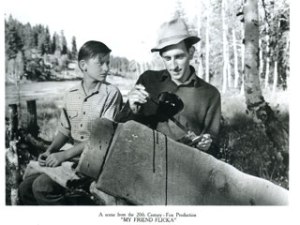








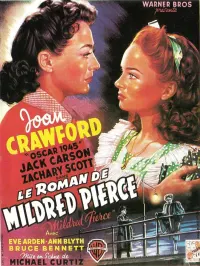




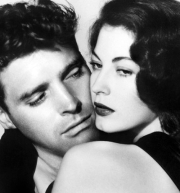













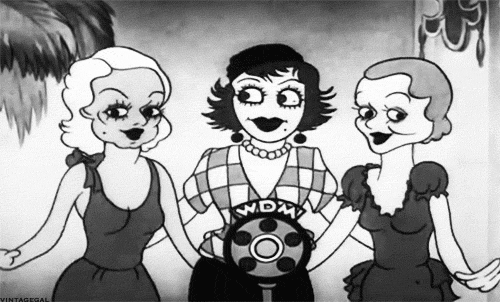


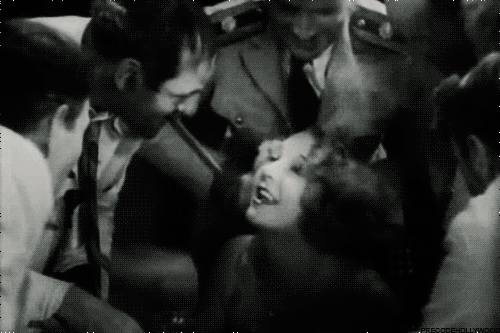


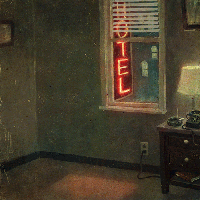
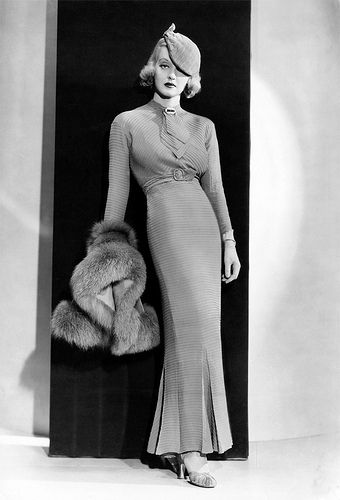



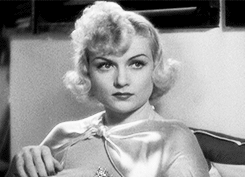
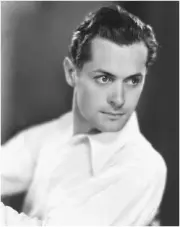
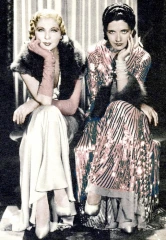

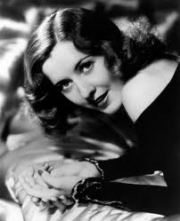



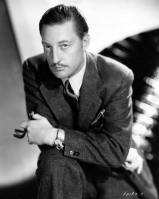




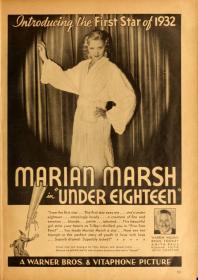
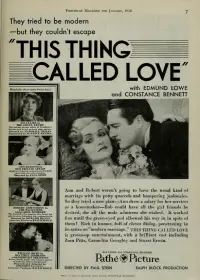

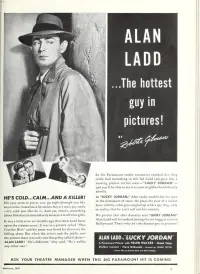
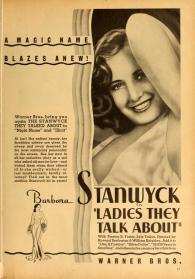

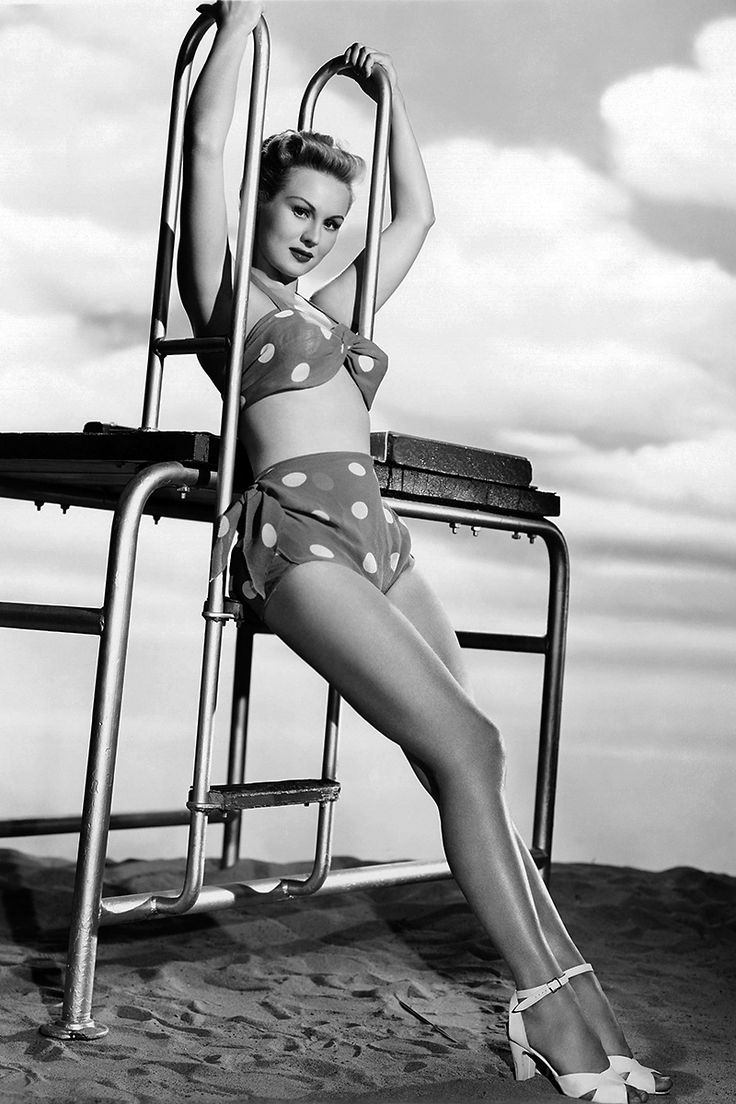

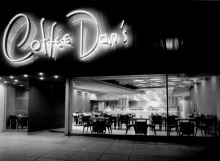

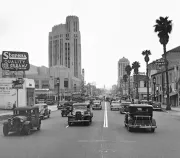
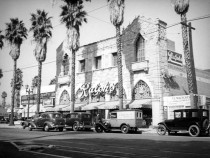


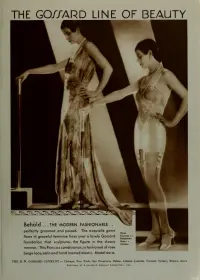

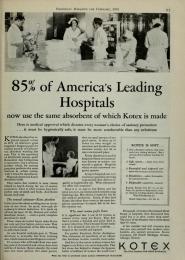

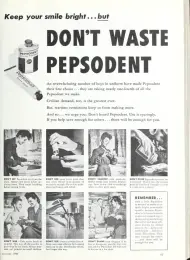


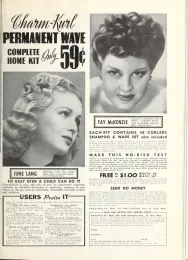


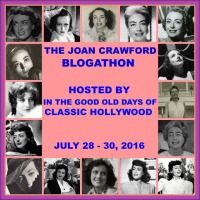


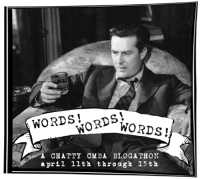

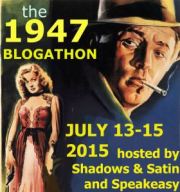
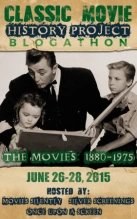
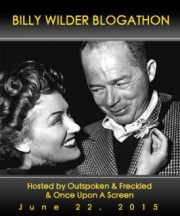


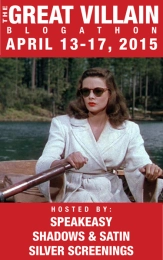


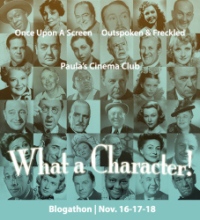
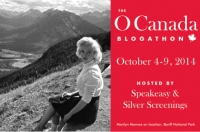


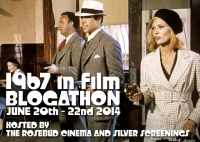


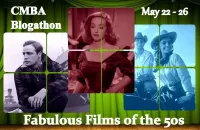
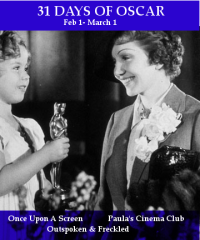
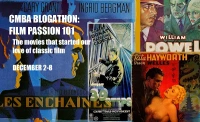







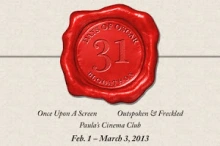

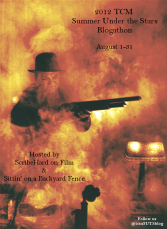


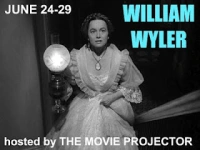





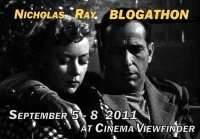

Wonderful tribute to a fine actor.
Was that 1997 commemoration filmed, I wonder.
Thanks, Vienna — wouldn’t it be wonderful to see? It certainly should be accessible somewhere.
What a coup to interview Jeff Corey! And it sounds like you conducted a great interview, based on the information & stories you’ve presented.
Was glad to see that he was invited to the “Hollywood Remembers” event and received an apology. That blacklisting nonsense was just that, wasn’t it?
Thank you so much, Ruth — he was the nicest man. I’d mailed him to request an interview, and he just called me up one night, and said, Hello, this is Jeff Corey. I thought my head would pop off.
That’s Jeff Corey! I had his name mistakenly linked with Wendell Corey! Thanks for writing about him and clearing up my error!
That’s the one! Funny to have two unrelated actors with this unusual last name!
[…] Jeff Corey – Shadows and Satin […]
What a great post! This was a fine tribute – I learned so much!
Thank you so much, Marsha — I appreciate you saying so!
Karen, can I just say…you so rock. You talked to this guy on the phone? I had no idea he taught so many great actors or the adversity he faced. Thanks for this.
Paula, you are a sweetheart. Thank you so much for your comment! 🙂
How marvelous that you were able to speak with Mr. Corey and share that with us. My first thought when I hear his name is Tom Chaney in “True Grit”. I first saw it at the age of 12 and it made a major impression. After that, I always looked out for him on The Late Show.
Have you ever seen the comedy-horror spoof “You’ll Find Out”? Mr. Corey appears as a radio program contestant called “Mr. Corey”. It’s a hoot!
Hi, CW — I loved him in True Grit, didn’t you? I haven’t seen You’ll Find Out, but you can bet that I’ll be keeping an eye out for ti!
That’s fantastic that you had the opprotunity to interview Mr. Corey. Quite frankly, his face was familiar but not his name. I believe I have only seen him in “My Friend Flicka” and Mission Impossible. It looks like I’ll just have to watch more of his films now! This was a great look into his life, thank you!
Thanks so much, Constance! I hope you get to see some of his movies — I think he was especially good in The Killers and Canon City.
Karen – this is fantastic! How wonderful that you got to speak with him and that he was actually a nice man. Love learning that as well as all the details of his life. Thank goodness for his persistence so we have the roles he portrayed in so many films forever! He’s yet another of the character actors given attention in the blogathon whose name I don’t quite remember, but am always happy to see.
Aurora
Thank you, Aurora! Interviewing Mr. Corey will always be one of the highlights of my life — he was a real cool cat.
How nice that you could talk to him. And what a life he had! It would make a wonderful movie. The episode about the pencil was surprising.
Don’t forget to read my contribution to the blogathon! 🙂
Greetings!
Corey sounds like an absolute dream of an interview subject: witty, intelligent, and generous. Why is that so many times it’s the character actors who have the best stories to tell? I really appreciated learning about his life and career. In spite of all that he faced, it’s heartwarming to see that his love for acting never stopped. Thanks so much for this great post. I’ll be sure to keep a sharp eye out for Corey in the future.
Thank you, Aubyn! He really was great to interview — his memories were as sharp as if they’d happened the day before, and he was just so interesting. And he was inspirational, too — talk about never-say-die!